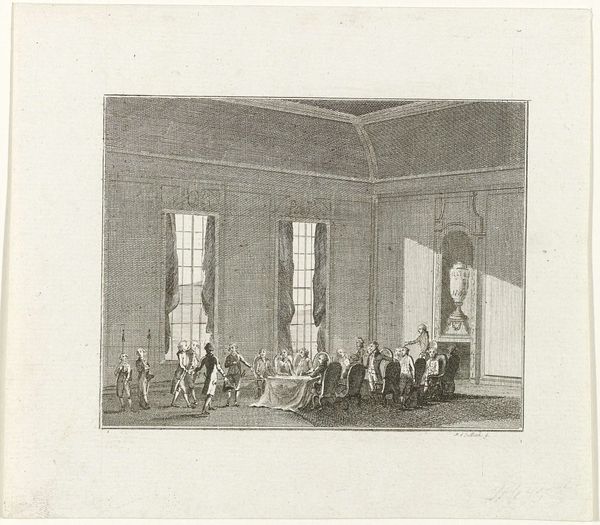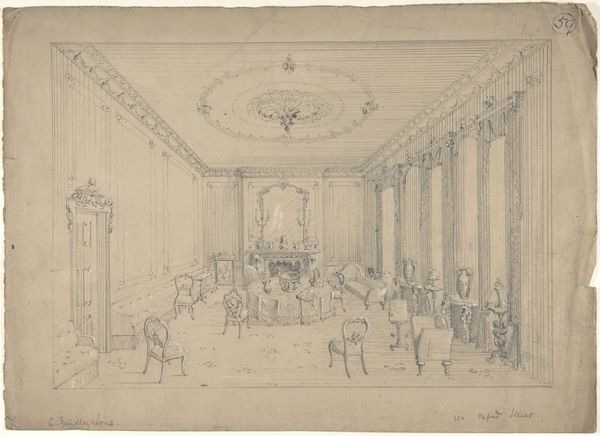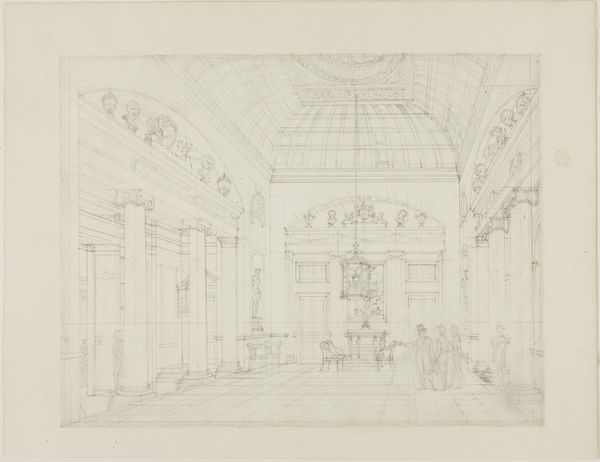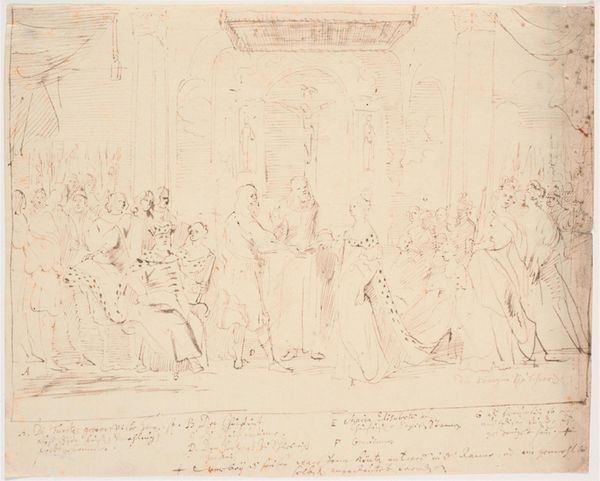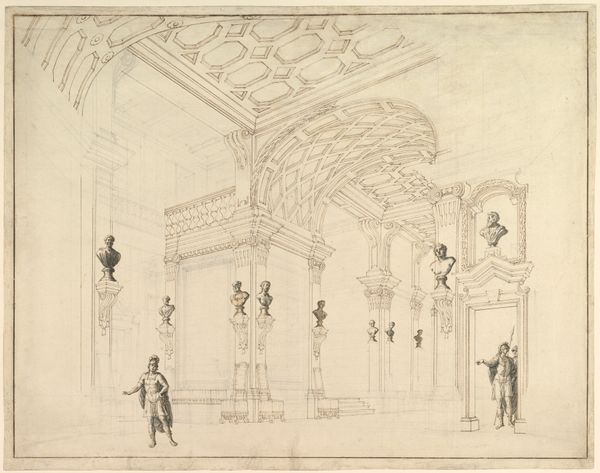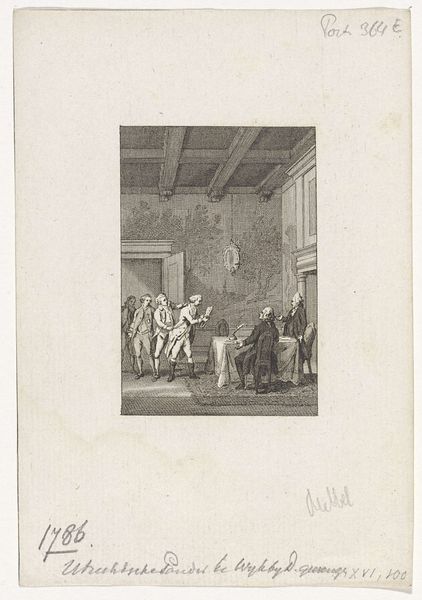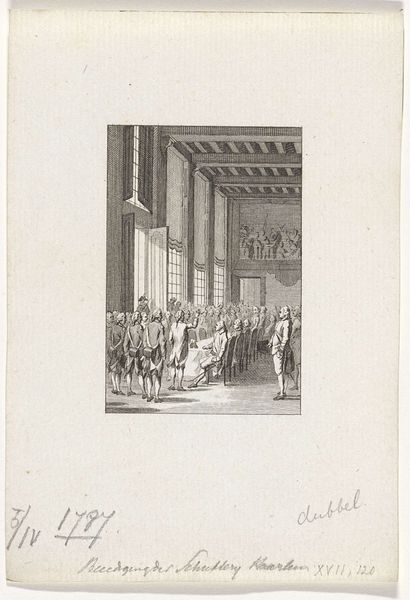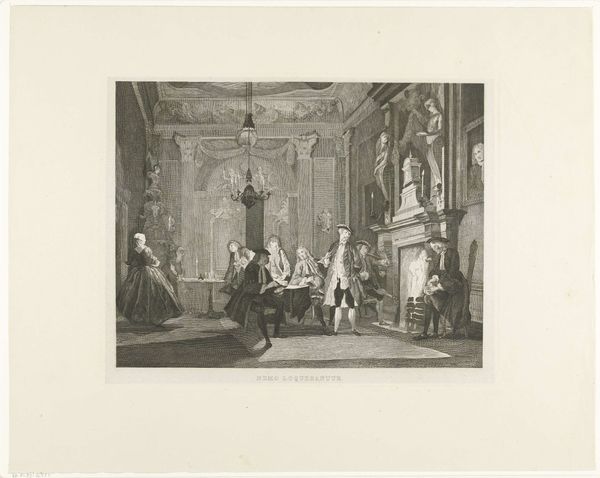
Joan Derk van der Capellen verschijnt in de vergadering van Ridderschap en Steden te Overijssel, 1782 1787
0:00
0:00
mathiasdesallieth
Rijksmuseum
drawing, etching, architecture
#
drawing
#
neoclacissism
#
etching
#
etching
#
history-painting
#
architecture
Dimensions: height 139 mm, width 170 mm
Copyright: Rijks Museum: Open Domain
Curator: Here we have Mathias de Sallieth's etching, made in 1787. It depicts "Joan Derk van der Capellen verschijnt in de vergadering van Ridderschap en Steden te Overijssel, 1782" and is currently located in the Rijksmuseum. Editor: My initial impression is that the setting seems strangely formal yet unfinished. The grand hall almost appears to be sketched in. Curator: The seemingly unfinished nature aligns with Neoclassical principles, often embracing clear lines and a certain austerity to evoke a sense of historical gravitas and order. Notice the architectural details; even they’re reduced to essentials. It allows the viewer to focus on the human drama. Editor: That’s true, but the lack of ornamentation, in my view, almost flattens the scene. Do you feel like it diminishes the significance of what seems like a bold entrance for van der Capellen? We need to unpack his political impact. He was such a revolutionary figure in Dutch history, fighting against oligarchic rule. This etching almost feels... subdued, given that. Curator: I understand your point, but the restraint might actually heighten the scene’s tension. Van der Capellen is not being celebrated with a lavish spectacle. The figures at the table seem rather wary and guarded. The symbolic weight is heavy despite its minimalist style. Notice the empty vase set into the wall in the background. This could reference to an empty hope, or emptiness of current rule in the face of van der Capellen coming into the hall to disrupt the status quo. Editor: Interesting. So, that vase could signal a potential change within the existing political and social structure, ready to be refilled with van der Capellen’s revolutionary spirit? Curator: Precisely. Remember that prints like these served as crucial tools for disseminating information and shaping public opinion in the late 18th century. The clarity in Sallieth's etching ensured that the image would be reproducible and reach a broad audience. The symbolism of change can cross borders and cultures easily. Editor: In that context, the formal aesthetic becomes even more loaded. Sallieth, in my opinion, is not just depicting an event but strategically framing van der Capellen’s challenge to power within the existing establishment to a very wide population, to provoke change across social classes. Curator: Exactly. An important symbolic work capturing the undercurrents of political change during a pivotal moment in Dutch history. Editor: It's an understated etching with profound implications—both then and now. I feel more informed and appreciative now, I will need to come back to see if my analysis changes.
Comments
No comments
Be the first to comment and join the conversation on the ultimate creative platform.
